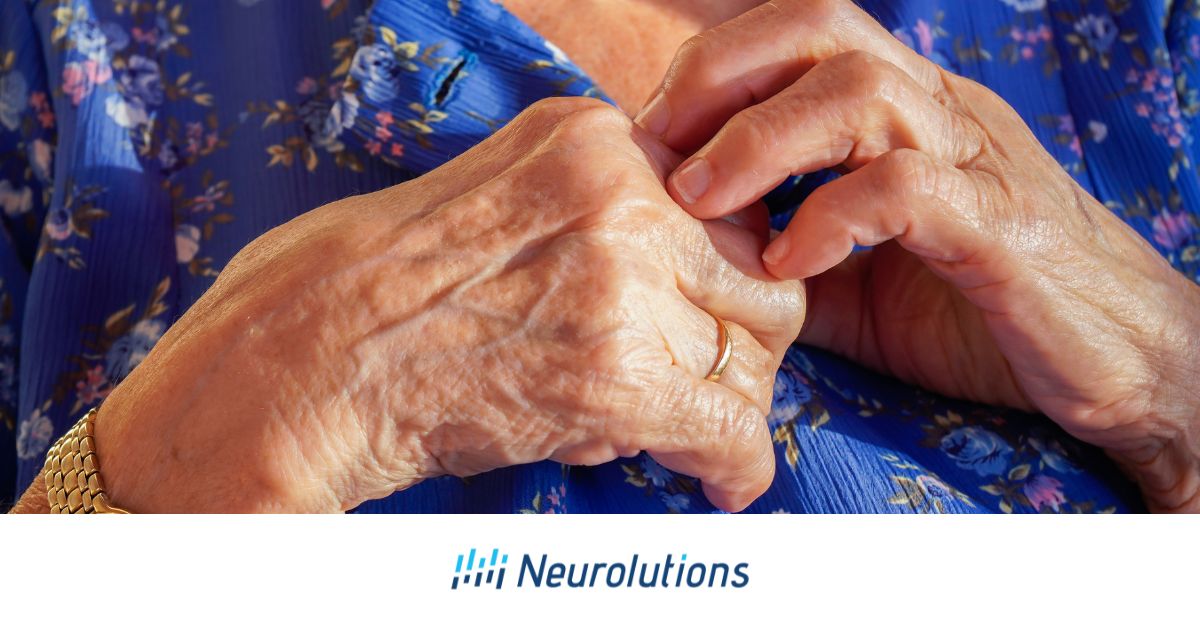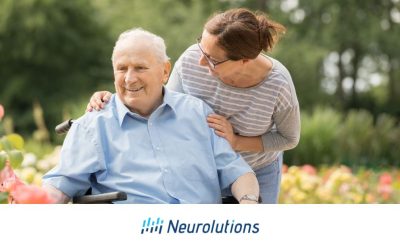What is Apraxia?
Apraxia is a brain condition that affects movement planning, not muscle strength.
Apraxia is a brain condition that makes it hard to plan and carry out movements. People with apraxia find it difficult to do simple tasks, and it can make everyday activities like eating or speaking hard to do. They struggle to perform movements they want to do–even when they understand what to do–because the brain can’t coordinate and plan those movements properly. Apraxia often happens after events like a stroke or Traumatic Brain Injury (TBI) (1).
How Apraxia Differs from Other Disorders due to Brain Damage:
Apraxia presents unique challenges that set it apart from other neurological conditions. People with apraxia may struggle to perform tasks even when (2):
- They understand what they’re being asked to do
- They are motivated and want to do the movement
- Their muscles and strength are intact
- They previously knew how to do the task
Apraxia can occur alongside other brain conditions, such as aphasia —a disorder that affects speaking and understanding language. While aphasia may make it difficult to find the right words or form sentences, it doesn’t typically affect a person’s ability to plan or carry out movements.
Apraxia isn’t always caused by brain injury or stroke. In fact, about 1-2% of children are born with it, particularly those on the autism spectrum (3).
Causes and Risk Factors for Apraxia
Apraxia is usually caused by brain damage from stroke, injury, or neurological condition.
Apraxia occurs when the nerve pathways that connect movement planning in the brain to physical action are damaged.
The main causes of apraxia include (4):
- Stroke: Strokes damage brain cells, damaging the pathways that allow movement.
- Traumatic Brain Injury (TBI): Like strokes, TBIs damage the brain’s nerve pathways, making it hard to plan movements.
- Dementia: Up to 90% of those who have dementia may develop apraxia, especially in the later stages of the disease as more brain cells are affected (4).
Recognizing the Types and Symptoms of Apraxia
There are many types of apraxia that affect different body parts and functions.
What are the Different Types of Apraxia?
Apraxia can affect different parts of the body and specific skills, depending on the type. These types can occur alone or in combination and include (5):
- Ideomotor apraxia: This type makes it hard to copy or mimic another person’s movements. For example, a therapist might show a patient how to lift an arm, but someone with ideomotor apraxia may struggle to copy the movement.
- Limb-kinetic apraxia: This type affects making precise movements with hands, fingers, arms, or legs. A person might understand what to do but can’t position their body correctly to do the task.
- Conceptual apraxia: This type makes it hard to use tools correctly. For example, a person might no longer know how to use basic items like forks, knives, and spoons, even though they once did.
- Ideational apraxia: This type makes it hard to plan or sequence movements for a specific task. For example, someone who used to climb stairs may no longer be able to plan how to bend their knees and shift their weight to move from one step to the next.
- Constructional apraxia: This type involves difficulty drawing, building, or assembling simple shapes or objects.
- Oculomotor apraxia: This type affects the ability to control eye movements. A person may find it hard to move their eyes in specific directions like up, down, or side to side, even though their eyes are healthy.
- Buccofacial apraxia (also called facial-oral apraxia): This type involves trouble coordinating facial and lip movements for tasks like winking, whistling, or coughing. It can also impact speech, making it hard to form words clearly and be understood by others.
Symptoms of Apraxia
Apraxia makes it difficult to carry out familiar tasks, like speaking clearly or putting on clothes in the correct order, even when muscle strength is normal. If someone who previously had no trouble dressing suddenly puts a sock on after their shoe, that could indicate apraxia.
Diagnosis and Assessment of Apraxia
Doctors typically use physical exams and brain imaging to help diagnose apraxia.
If apraxia is suspected, a primary care provider may refer the patient to a neurologist for further evaluation, often as part of a broader care team. Diagnosis is usually made through a collaborative approach involving specialists such as neurologists, speech-language pathologists, and occupational therapists.
During the neurologist’s evaluation, three key areas are typically assessed:
- Motor skills: Can the person raise an arm, grasp objects, or complete basic tasks like feeding themselves?
- Sensory function: Can they detect pressure, touch, or changes in temperature?
- Cognitive abilities: Are they able to recall recent events, understand spoken language, and express themselves clearly?
Advanced Tools and Tests Used to Diagnose Apraxia
To diagnose apraxia in people who had a stroke or TBI, doctors often use brain imaging. These images help identify the injured brain regions, which can explain the symptoms. Apraxia is often linked to damage in a part of the brain called the parietal lobes or the nerve pathways that connect to them (6).
The most common brain imaging used include:
- Computed tomography (CT) scan
- Magnetic Resonance Imaging (MRI) scan
- Positron Emission Tomography (PET) scan
Besides brain imaging, there are other specific tests that diagnose different types of apraxia. Doctors will choose which test to perform based on the patient’s symptoms. For example, just for limb-kinetic apraxia, the following six tests are commonly considered (7):
- Florida Apraxia Battery–Extended and Revised Sydney (FABERS)
- Apraxia Battery for Adults-2
- Short Screening Test for Ideomotor Apraxia (STIMA)
- Cologne Apraxia Screening (KAS) or Revised Cologne Apraxia Screening (KAS-R)
- Diagnostic Instrument for Limb Apraxia (DILA) or the Diagnostic Instrument for Limb Apraxia-Short Version (DILA-S)
- Test of Upper Limb Apraxia (TULIA)
The Need for a “Team Approach” to Diagnosing and Treatment Planning for Apraxia
For stroke and TBI survivors, diagnosing and treating apraxia usually requires a team of healthcare professionals. Besides the neurologist, specialists like occupational therapists, physical therapists, and speech-language pathologists work together to understand the patient’s problems and create a treatment plan.
The specialists and therapists will watch and test the patient doing specific tasks to find issues with movement and motor planning and identify what type of apraxia they might have. For example, to check for ideomotor apraxia, the neurologist may ask the patient to perform simple, familiar movements. To assess for ideational apraxia, the patient might be asked to complete multi-step tasks, like putting on socks and shoes.
Testing for all forms of apraxia is advisable to understand and identify the right therapies and support.
Speech-Language Therapy Tests for Apraxia in Adults Affecting Speech:
The most common type of apraxia after a stroke is buccofacial apraxia (also called facial-oral apraxia), which makes it difficult to move the mouth and face for speech. It affects about one-third of stroke survivors (9).
After ruling out or identifying aphasia and determining its type, speech-language pathologists (SLPs) assess for facial-oral apraxia by evaluating several key areas:
- Motor speech planning: Can the person plan and coordinate mouth, lip, and tongue movements to say words? For example, shaping the mouth into a round “O” to say “oh.”
- Speech perception: How well does the person recognize and interpret spoken sounds? For instance, they may hear “oh” but confuse it with “eye.”
- Oral mechanism function: Is the mouth, tongue, and facial musculature physically capable of producing sounds (in terms of strength, range, and coordination)?
- Voice and resonance: Does air flow properly through the vocal cords, and is the resulting sound quality clear and consistent?
- Language skills: Can the person speak, understand, and read their native language effectively?
The Impact of Apraxia on Quality of Life
Apraxia affects mental health, social life, and daily independence.
Apraxia can greatly affect a person’s mental and emotional well-being. For stroke and TBI survivors, brain injuries can cause chemical changes in the brain leading to chronic depression and sleep problems. In fact, post-stroke depression happens in at least 30% of stroke survivors (10).
Social and Emotional Challenges of Apraxia
Frustration with communication often leads people with apraxia to withdraw socially, which can worsen memory and focus issues. This isolation can slow recovery and make rehabilitation and recovery more difficult.
Coping with Communication Loss due to Apraxia
Starting speech therapy as soon as possible can help improve speech and communication recovery. If a person has both apraxia and aphasia, a speech therapist can treat both conditions. With time and practice, many people with apraxia recover their speaking ability or learn new ways to communicate through drawing pictures, writing, or using communication tools.
Coping with Movement Difficulties due to Apraxia
For stroke and TBI survivors with movement challenges, caregivers often need to help with daily tasks like eating and dressing. Rehabilitation programs with therapy can help relearn these tasks, especially if movement problems are mild.
Apraxia affects the ability to do daily tasks and can also create safety risks at home. Because of this, many survivors need daily in-home care or may need to move to an assisted living facility or nursing home for extra support (12).
Treatments and Strategies to Manage Apraxia
Different therapies help manage apraxia depending on how it affects the person.
Apraxia is treated differently depending on the type and severity of symptoms.
- For speech-related apraxia, speech therapy is effective.
- For movement-related apraxia, occupational therapy and physical therapy are typically recommended.
- Because many people recovering from stroke or traumatic brain injury (TBI) also struggle with memory and thinking, cognitive therapy should also be part of the rehabilitation plan.
Common speech therapy techniques for apraxia are (13):
- PROMPT (Prompts for Restructuring Oral Muscular Phonetic Targets):
A tactile-kinesthetic technique in which the therapist gently touches the patient’s face, lips, and jaw to guide the correct oral movements needed to produce sounds—such as vowels (“a-e-i-o-u”) and consonants (like “b” and “d”). - Keyword practice:
The person practices short, functional phrases like “I want to eat” or “Can I eat now?” Once mastered, the therapist gradually introduces new words and sentences to expand communication skills. - Prosodic therapy:
This method helps improve the natural rhythm, stress, and intonation of speech—often called the “melody of speech.” For example, the voice typically rises at the end of a question in English.
Task-Specific Training for Apraxia
For both movement-related and speech-related apraxia, therapists use structured strategies to help people relearn and regain lost abilities:
- Breaking down tasks:
Therapists divide complex activities into smaller, manageable steps. This step-by-step approach makes it easier for the brain to relearn specific movements or words. - Repetition and practice:
Repeating a task many times helps reinforce neural pathways, gradually restoring the ability to perform movements or speech patterns more smoothly. - Backward chaining:
In this method, the person learns the last step first, then adds earlier steps in sequence. For example, a person may begin by practicing taking a bite of a sandwich, then learn how to lift it, and finally how to grasp it correctly.
Self-Awareness and Error-Detection Training
To relearn lost skills like pronouncing vowel sounds, people with apraxia need to recognize their mistakes. Therapists may record the person’s speech and have them listen to it. This technique helps individuals with apraxia become more aware of their errors and understand what needs improvement for better speech accuracy.
Other Strategies for Supporting Relearning and Self-Awareness in People with Apraxia
In addition to therapy exercises, there are several effective strategies to support relearning and foster self-awareness in individuals with apraxia:
- Watching others perform tasks:
People with apraxia can benefit from observing others perform tasks or movements before attempting them themselves. Watching these actions helps the brain relearn how to perform the same tasks. - Using verbal or visual cues:
Simple verbal or visual cues can guide understanding and responses. For instance, showing a photo of someone drinking milk and asking, “What is the person drinking?” encourages thinking and communication. - Adapting tasks for independence:
Finding easier ways to complete tasks helps individuals maintain their independence. For example, if tying shoelaces is too difficult, using slip-on shoes allows the person to dress independently, helping them prepare for outings or appointments. - Use of technology to support relearning:
- Therapists may use videos or devices and tools to guide exercises. These tools can be especially helpful for practicing therapy exercises at home, supporting therapy goals.
Comparing Apraxia, Aphasia, and Dysarthria
Apraxia, aphasia, and dysarthria are different conditions with some similar symptoms.
Aphasia affects a person’s ability to use and understand language. There are two main types:
- Broca’s aphasia: People with Broca’s aphasia understand speech but struggle to speak clearly. Broca’s aphasia is more common and often appears with apraxia after a stroke or TBI (14). This type of aphasia presents itself as a person saying incorrect words, for example saying “I eat the dog” instead of “I walk the dog” (15).
- Wernicke’s aphasia: People with Wernicke’s aphasia can speak fluently with correct grammar, but use words that don’t make sense and have trouble understanding others.
Dysarthria is a speech disorder caused by muscle weakness in the face, mouth, or throat, making speech slurred or unclear. It often results from stroke-related paralysis. Treatment focuses on strengthening the muscles through therapy.
Overlapping Symptoms with Apraxia and Misdiagnosis or Mistreatment
After a stroke or TBI, survivors often experience paralysis or weakness on one side of their body, which can affect motor skills like walking. However, issues with thinking and memory are also common. Apraxia, being primarily a disorder of thinking, can present itself as a movement disorder, which may lead to confusion in diagnosis (16).
For instance, a stroke or TBI survivor may have paralysis in one hand but still struggle to use their stronger hand for simple tasks, such as guiding a spoon to their mouth. This could be due to apraxia or simply lost muscle movement. In these cases, treatment must address both issues: therapy to strengthen the weak limb and apraxia-focused therapy to retrain the brain for proper movement planning.
Conclusion
Apraxia requires proper diagnosis and ongoing therapy to improve quality of life.
Apraxia is a brain disorder caused by injury to the brain or its pathways, often following a stroke or traumatic brain injury. It impairs the brain’s ability to plan and execute movements, even though the muscles themselves function normally. Common types of apraxia include buccofacial apraxia (facial-oral apraxia), ideational apraxia, and motor (limb-kinetic) apraxia, particularly among stroke survivors. Each affects different aspects of movement and task execution (17).
Treatment varies based on the type of apraxia. Speech, occupational, physical, and cognitive therapies are all essential in addressing the disorder. Unlike aphasia or dysarthria, apraxia involves difficulty coordinating movement, not muscle weakness.
Living with apraxia can be both frustrating and isolating, often leading to depression. People with apraxia may need assistance with daily activities, which can reduce their sense of independence. Caregivers, family, and friends play a crucial role in supporting the emotional well-being of individuals with apraxia, encouraging social interaction. Participation in rehabilitation therapies can help promote neuroplasticity, boosting brain function and increasing the likelihood of regaining lost skills and independence.
Frequently Asked Questions About Apraxia
Q: What is apraxia?
A: Apraxia is a neurological disorder that affects the brain’s ability to plan and carry out movements, despite normal muscle strength.
Q: What causes apraxia?
A: It’s usually caused by brain injury, stroke, traumatic brain injury (TBI), or neurodegenerative diseases like dementia.
Q: What are the different types of apraxia?
A: Types include ideomotor, ideational, limb-kinetic, buccofacial (speech), conceptual, oculomotor, and constructional apraxia.
Q: How is apraxia different from aphasia?
A: Apraxia affects movement planning, while aphasia affects language understanding and production. They can occur together but are distinct disorders.
Q: Can apraxia be treated?
A: Yes. Treatment may include speech, occupational, physical, and cognitive therapy, depending on the type and severity.
Q: Is apraxia permanent?
A: With therapy, many people regain some or all lost functions, especially if treatment starts early.
References:
- Merck Manual [Consumer Version]. (Last Update: August 2023). Apraxia. Webpage: [https://www.merckmanuals.com/home/brain-spinal-cord-and-nerve-disorders/brain-dysfunction/apraxia]{.underline}
- US National Library of Medicine [MedlinePlus]. Apraxia. Webpage: [https://medlineplus.gov/ency/article/007472.htm]{.underline}
- Apraxia Kids. Comorbidity. Webpage: [https://www.apraxia-kids.org/virtual-education-series/comorbidity-2/]{.underline}
- Gowda SN, Hodis B, and Kolton Schneider L. Apraxia. (Last Update: May 16, 2024). In: StatPearls [Internet]. StatPearls Publishing: Treasure Island, FL. Webpage: [https://www.ncbi.nlm.nih.gov/books/NBK585110/#:~
=The%20most%20common%20causes%20of,poses%20challenges%20in%20its%20management]{.underline}. - National Organization for Rare Disorders (NORD). Apraxia. (Last updated: April 28, 2008). Webpage: [https://rarediseases.org/rare-diseases/apraxia/]{.underline}
- Baumard J, and Le Gall D. (2021). The challenge of apraxia: Toward an operational definition? The challenge of apraxia: Toward an operational definition? Cortex 141: 66-80. Webpage: [https://www.sciencedirect.com/topics/neuroscience/apraxia]{.underline}
- Gowda SN, Hodis B, and Kolton Schneider L. Apraxia. (Last Update: May 16, 2024). In: StatPearls [Internet]. StatPearls Publishing: Treasure Island, FL. Webpage: [https://www.ncbi.nlm.nih.gov/books/NBK585110/#:~
=The%20most%20common%20causes%20of,poses%20challenges%20in%20its%20management]{.underline}. - Ghoreyshi Z, Nilipour R, Bayat N, et al. (2022). The Incidence of Aphasia, Cognitive Deficits, Apraxia, Dysarthria, and Dysphagia in Acute Post Stroke Persian Speaking Adults. Indian J Otolaryngol Head Neck Surg 74(Suppl 3): 5685-5695. Webpage: [https://pmc.ncbi.nlm.nih.gov/articles/PMC9895668/]{.underline}
- Pracar AL, Ivanova MV, Richardson A, et al. (2023). A case of pure apraxia of speech after left hemisphere stroke: Behavioral findings and neural correlates. Frontiers in Neurology 14: 1187399. doi: 10.3389/fneur.2023.1187399. PMID: 37576017; PMCID: PMC10421996.
- New York-Presbyterian Medical Center [New York, NY]. (May 4, 2023). Health Matters. Understanding the Connection Between Stroke and Depression. Webpage: [https://healthmatters.nyp.org/understanding-the-connection-between-stroke-and-depression/]{.underline}
- American Heart Association (AHA). (May 1, 2023). Newsroom — Cognitive impairment after stroke is common, and early diagnosis and treatment needed. Webpage: [https://newsroom.heart.org/news/cognitive-impairment-after-stroke-is-common-and-early-diagnosis-and-treatment-needed]{.underline}
- Donkervoort M, Dekker J, and Deelman B. (2006). The course of apraxia and ADL functioning in left hemisphere stroke patients treated in rehabilitation centres and nursing homes. Clinical Rehabilitation 20(12): 1085-1093. Webpage: [https://journals.sagepub.com/doi/10.1177/0269215506071257]{.underline}
- West C, Hesketh A, Vail A, et al. (2005). Interventions for apraxia of speech following stroke. Cochrane Database Syst Rev 2005(4): CD004298. Webpage: [https://pmc.ncbi.nlm.nih.gov/articles/PMC8769681/]{.underline}
- US National Institute on Deafness and Other Communication Disorders (NIDCD). Aphasia. Webpage: [https://www.nidcd.nih.gov/health/aphasia]{.underline}
- American Stroke Association. Types of Aphasia. Webpage: [https://www.stroke.org/en/about-stroke/effects-of-stroke/communication-and-aphasia/stroke-and-aphasia/types-of-aphasia]{.underline}
- François Osiurak, and Didier Le Gall. (2015). Apraxia: A gestural or a cognitive disorder?, Brain 138(3): e333. Webpage: [https://academic.oup.com/brain/article/138/3/e333/331765]{.underline}
- Ghoreyshi Z, Nilipour R, Bayat N, et al. (2022). The Incidence of Aphasia, Cognitive Deficits, Apraxia, Dysarthria, and Dysphagia in Acute Post Stroke Persian Speaking Adults. Indian J Otolaryngol Head Neck Surg 74(Suppl 3): 5685-5695. Webpage: [https://pmc.ncbi.nlm.nih.gov/articles/PMC9895668/]{.underline}





